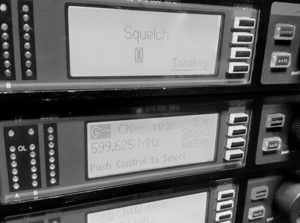I’ve had several people ask me recently about squelch on their wireless mics. Squelch is an important factor in radio transmission and must be utilized correctly if you intend to use wireless mics in a sound system. Wireless mics are highly susceptible to interference from other radio transmissions and setting the proper squelch is just as important as ensuring your frequencies match on your transmitter and receiver.

Squelch means to “to completely suppress”. Its function is to mute the audio output of the receiver when the radio signal falls out of an acceptable range. Without a signal to “latch” onto the open receiver may pick up another signal or radio noise from somewhere else. This is typically heard as “white” noise and is often much louder than the audio signal from the desired frequency. As you can imagine, we don’t want to hear unexpected white noise over any loud PA system. HAM and CB radio operators are familiar with adjusting their squelch on their radio receivers to ensure clear communication and to prevent the same white noise from playing back through their receiver.
We can easily adjust the squelch on wireless mics with just a few steps. Most setting can be adjusted in the main menu or the near the same menu as the frequency settings. In some cases the squelch might be a physical knob which can be found on the back of the wireless receiver unit. Check with your owners manual or manufacturer for specific steps regarding your wireless unit.
Shure provides these steps for their wireless systems.
- Set the receiver volume control to minimum to avoid excessive noise in the sound system.
- Turn the receiver power on.
- Observe the RF and audio indicators on the receiver.
- If the indicators are showing a no-signal condition the squelch setting may be left as-is.
- If the indicators are showing a steady or intermittent signal-received condition increase the squelch control setting until a no-signal condition is indicated. Set the squelch control slightly past this point to provide a threshold margin.
- If the no-signal condition cannot be achieved even with high squelch settings it may be possible to find and eliminate the undesirable signal. Otherwise it may be necessary to select a different operating frequency.
- Turn the transmitter power on.
- Make sure that the receiver indicates a signal-received condition with the transmitter at normal operating distance.
